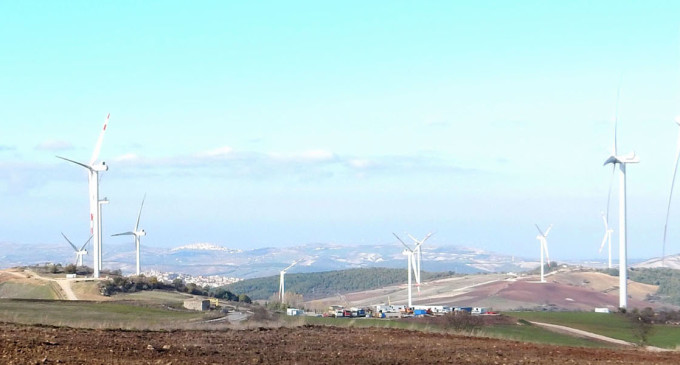As Chief Technology officer for Renergetica, Marco Giannettoni has a unique perspective on the technical and strategic challenges of integrating renewable energy into mining’s power supply. Renergetica is a leading project developer which specializes in hybrids for mines offering engineering and advisory services as well as a unique control system technology. In this Industry Q&A, Giannettoni offers his informed perspective on the evolution of this exciting sector.
Q: Renergetica has been actively focused on hybrids for mines for a number of years now. Can share some of your observations on how the market has changed?
A: We came to this market after we were involved in a very ambitious project involving the integration of a 20 MW PV plant into the microgrid of a remote gold mine in West Africa. At the time, we were new to the mining sector with our core business coming from developing wind and solar within the various renewables incentive programs in Europe and providing specialized engineering and advisory services to international investors.
Through our experience, we have witnessed a number of core challenges including technical issues; difficulties aligning mining and developer perspectives, and finance barriers. With financing, PPA structures and payback time are often more important than the Levelized Cost of Energy. Currently, low oil is also preventing the widespread uptake of renewables but we know that solar and wind will soon count for a substantial share of the energy mix of mines.
Q: What is your particular approach to renewables solutions for the mining sector?
A: Firstly, the technology to be used must be transparent to the mines: no compromises on power reliability and quality, and no dramatic change in the way equipment continues to operate. Our hybrid solutions are designed to be non-invasive add-ons, where renewables and control systems adapt to a mine’s conventional power system, and not vice versa. Depending on the business model of the project including the ownership structure and the mine life, we size the renewables component and determine the basic equipment choices.
We always start with a comprehensive feasibility study and end with smart control solutions utilizing a variety of technologies to ensure a highly specialized, consultative approach to lowering mining’s energy costs. For developers and suppliers, we are also a key engineering partner for hybrid projects.
Q: What can remote mines expect in terms of reducing energy costs through hybrid systems without a huge capital investment?
A: It largely depends on the specifics of the site conditions, the operation and its load profile. Also, the availability of renewable resources and the costs associated with the conventional power system are key factors. There is also a difference between brownfield and greenfield projects in terms of the opportunities for optimization and the impact of a hybrid on capital costs.
So it’s really hard, and not actually meaningful, to give an answer without a specific project in mind to set relevant assumptions. This is why we offer a preliminary feasibility study carried out by a specialized team as the first step to providing proper baseline information.
However, based on our experience on hybrids for gold mines in Mali and Tanzania, the payback time ranges between 2.5 to 4 years with PV providing up to 25% of the overall energy demand. This enables any mine to make some rough calculations knowing its current operating costs. But again, before making any sort of conclusion, ask for a pre-feasibility study.
Q: How are you evolving your hybrid control system to address a mine’s need for reliable power 24/7?
A: HGSC, our patent pending technology, is the result of R&D investments. Our aim is to provide a control solution for the “hybridization” of off-grid power systems using a conventional powerhouse with renewables penetration up to and exceeding 80% – without compromising power reliability. For grid-tied applications, HGSC is actually able to improve the power reliability and availability of a weak grid supporting tie-line control, black-start and generators/load shedding.
Q: How would you describe the market opportunities for hybrid systems for Chilean mines and Argentinian Mines?
A: This is probably the best time for Chilean mines to add renewables into their energy mix because of current low energy prices and low oil pricing. This situation won’t last long but it does create an opportunity. It means that mines are in a better position to negotiate PPAs and EPC contracts, securing low-cost energy for years to come. It also means that capital and operational costs are less which makes investment more affordable. Regarding Argentinian mines, it is a market we are just now starting to approach, and we’ll surely learn a lot from the upcoming summit in Santiago.
Q: What are you looking forward to at the Energy and Mines Santiago Summit?
Our objective is to get the current perspectives of mining companies and understand what they still consider as a barrier to adopting renewables as a trusted and effective complement to conventional energy. It’s almost 3 years since we first joined Energy and Mines in Toronto and it has given us the opportunity to observe and contribute to the translation of mines’ needs into real solutions.
We see a constant, yet moderate, increase of hybrid projects taking place in the mining sector. However, once hybrids are seen as reliable and feasible as conventional power that is significantly cheaper, we will see the natural and exponential growth of hybrids for mines.

